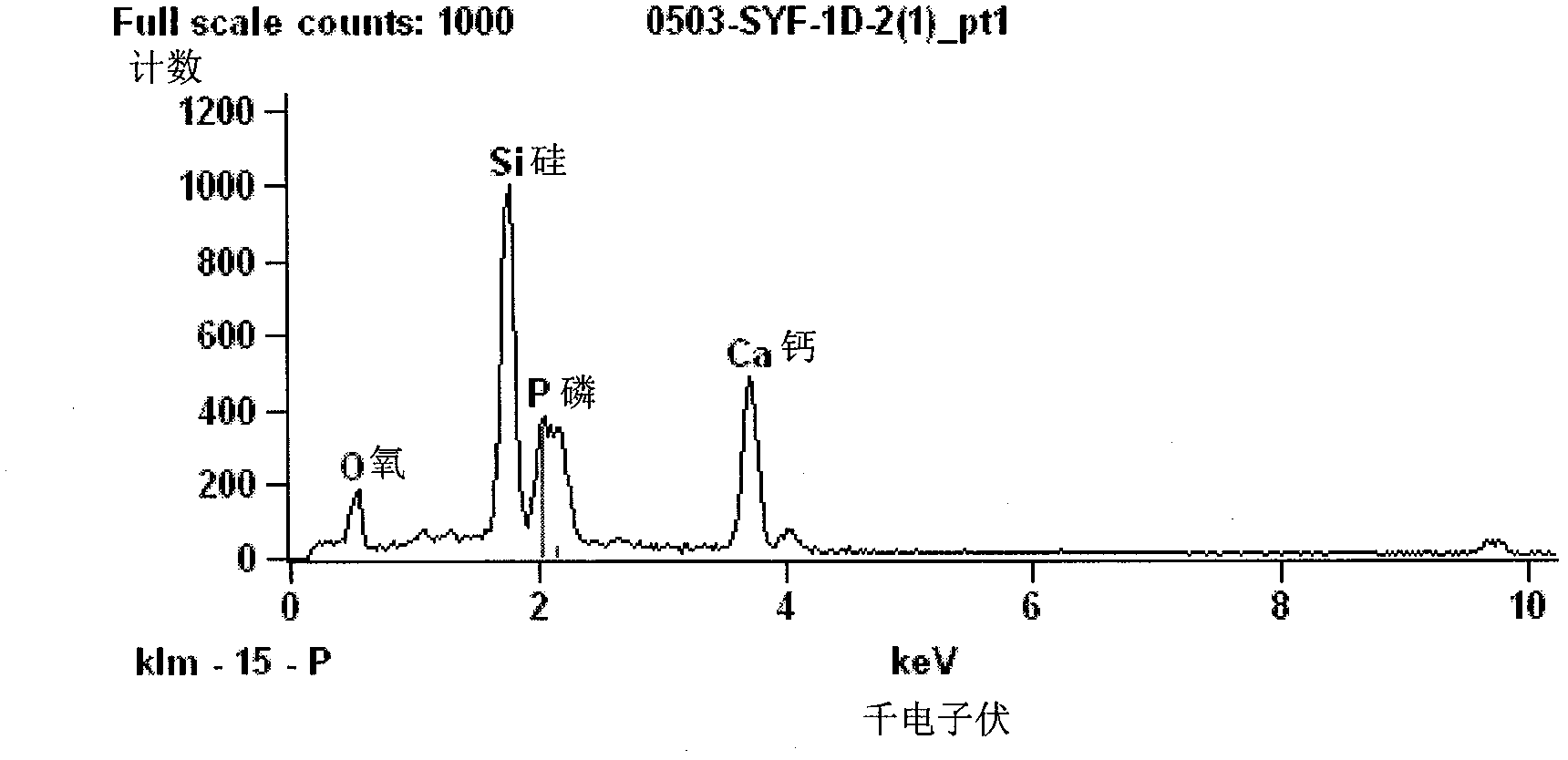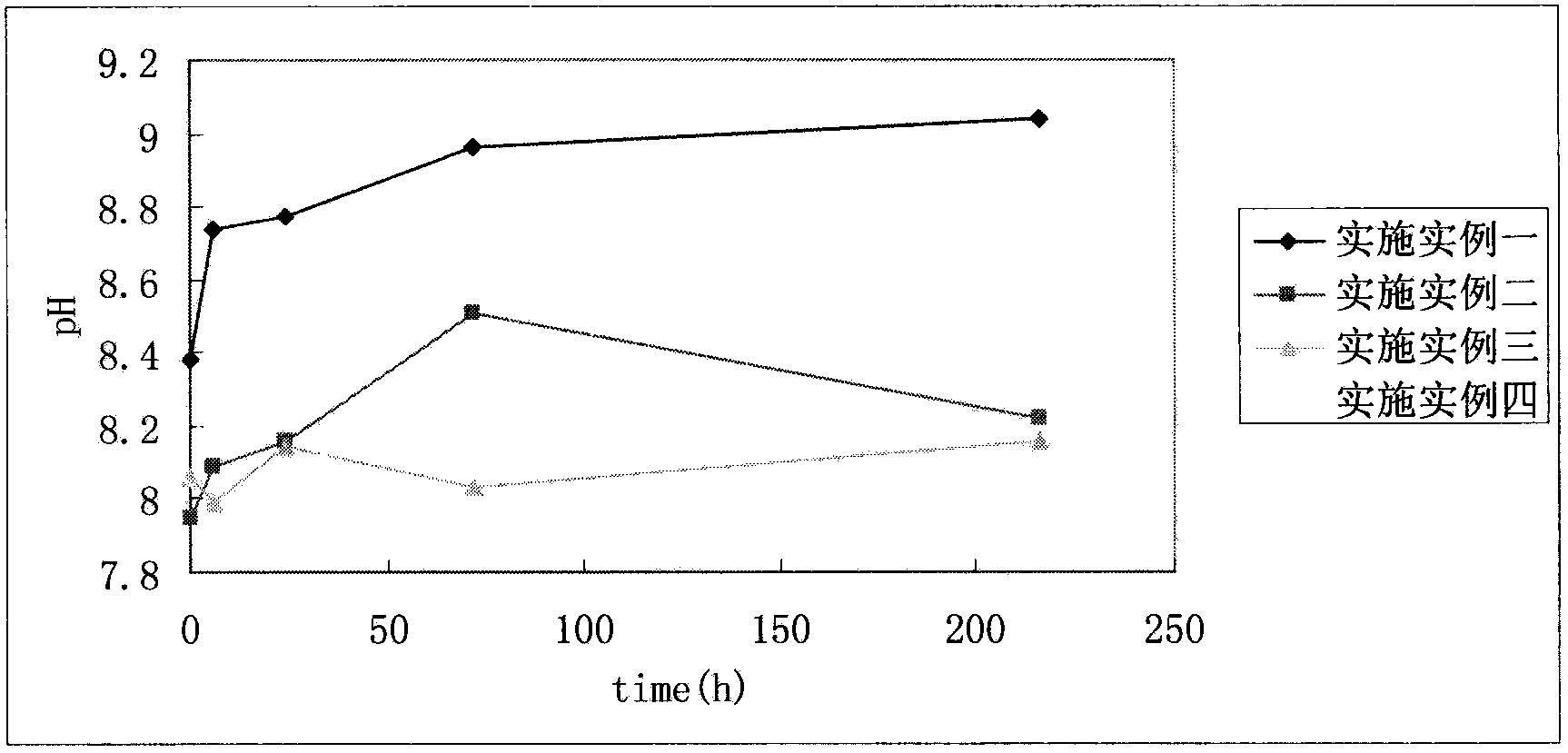Method for preparing micron-sized biological activity glass and application thereof in departments of orthopedics and dentistry
A bioactive glass and solution technology, applied in dentistry, dental preparations, dental prostheses, etc., to achieve the effect of simple equipment and low raw material prices
- Summary
- Abstract
- Description
- Claims
- Application Information
AI Technical Summary
Problems solved by technology
Method used
Image
Examples
Embodiment 1
[0026] 1) Add 7ml of concentrated nitric acid to 53g of absolute ethanol and mix to obtain solution I;
[0027] 2) Add 24.17g of ethyl orthosilicate to solution I, pre-hydrolyze for 30min (room temperature, 1000rpm) to obtain solution II;
[0028] 3) Add 1.7g of phosphorus pentoxide to solution II, stir at 1000rpm for 30min, to obtain solution III;
[0029] 4) Add 17g of calcium nitrate tetrahydrate to solution III, stir at 1000rpm for 1h, fully dissolve and form a clear gel.
[0030] 5) Place the clear gel in a closed container and age it in an oven at 60°C for 72 hours to form a gel;
[0031] 6) Dry the gel in an oven at 130°C for 72 hours, sieving by ball milling to obtain dry gel powder;
[0032] 7) The dry gel powder is calcined at 700° C. for 2 hours to obtain bioactive glass powder.
Embodiment 2
[0034] 1) Add 7ml of concentrated nitric acid to 53g of absolute ethanol and mix to obtain solution I;
[0035] 2) Add 24.17g of ethyl orthosilicate to solution I, pre-hydrolyze for 30min (room temperature, 1000rpm) to obtain solution II;
[0036] 3) Add 2.83g of phosphorous pentoxide to solution II, stir at 1000 rpm for 30 minutes to obtain solution III;
[0037] 4) Add 15.11 g of calcium nitrate tetrahydrate to solution III, stir at 1000 rpm for 1 hour, and fully dissolve to form a clear gel.
[0038] 5) Place the clear gel in a closed container and age it in an oven at 60°C for 72 hours to form a gel;
[0039] 6) Dry the gel in an oven at 130°C for 72 hours, sieving by ball milling to obtain dry gel powder;
[0040] 7) The dry gel powder is calcined at 700° C. for 2 hours to obtain bioactive glass powder.
Embodiment 3
[0042] 1) Add 7ml of concentrated nitric acid to 53g of absolute ethanol and mix to obtain solution I;
[0043] 2) Add 24.17g of ethyl orthosilicate to solution I, pre-hydrolyze for 30min (room temperature, 1000rpm) to obtain solution II;
[0044] 3) Add 4.25g of phosphorous pentoxide to solution II, stir at 1000 rpm for 30 minutes to obtain solution III;
[0045] 4) Add 12.75g of calcium nitrate tetrahydrate to solution III, stir at 1000 rpm for 1 hour, fully dissolve and form a clear gel.
[0046] 5) Place the clear gel in a closed container and age it in an oven at 60°C for 72 hours to form a gel;
[0047] 6) Dry the gel in an oven at 130°C for 72 hours, sieving by ball milling to obtain dry gel powder;
[0048] 7) The dry gel powder is calcined at 700° C. for 2 hours to obtain bioactive glass powder.
PUM
 Login to View More
Login to View More Abstract
Description
Claims
Application Information
 Login to View More
Login to View More - R&D
- Intellectual Property
- Life Sciences
- Materials
- Tech Scout
- Unparalleled Data Quality
- Higher Quality Content
- 60% Fewer Hallucinations
Browse by: Latest US Patents, China's latest patents, Technical Efficacy Thesaurus, Application Domain, Technology Topic, Popular Technical Reports.
© 2025 PatSnap. All rights reserved.Legal|Privacy policy|Modern Slavery Act Transparency Statement|Sitemap|About US| Contact US: help@patsnap.com



